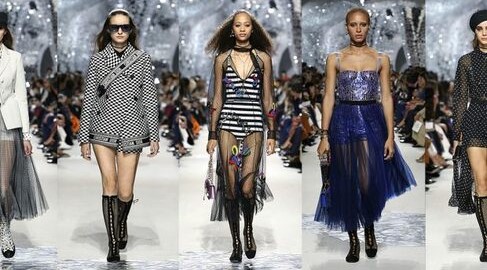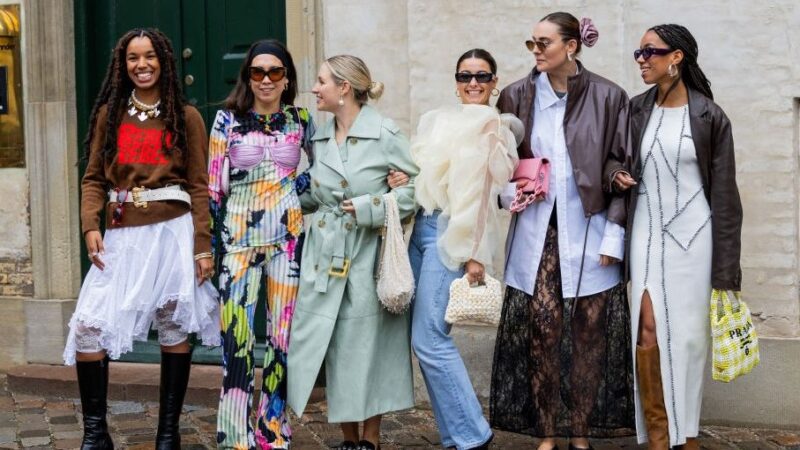Sustainable Fashion: Eco-Ethical Style Fusion

Introduction
In the world of fashion, a significant paradigm shift is underway. As the global community becomes increasingly aware of environmental issues and social injustice, the concept of sustainable fashion has taken center stage. This movement is not a fleeting trend but a fundamental shift in how we produce and consume fashion. It’s about creating an industry that respects the planet and its people, a harmonious blend of style, ethics, and sustainability.
The Emergence of Sustainable Fashion
Historically, the fashion industry has been one of the major contributors to environmental degradation and labor exploitation. The rise of fast fashion exacerbated these issues, with its relentless pursuit of speed and low costs leading to severe environmental harm and often deplorable working conditions. In response, the late 20th and early 21st centuries saw the birth of the sustainable fashion movement. This movement was initially seen as a niche interest but has grown into a global force, championed by designers, brands, and consumers alike.
Defining Sustainable Fashion
Sustainable fashion is multifaceted. It encompasses the use of eco-friendly materials, such as organic cotton, hemp, and bamboo, or recycled materials like PET plastic. It also involves ethical manufacturing practices that provide fair wages and safe working conditions. Beyond materials and labor, sustainable fashion also emphasizes durability and design for longevity, countering the throwaway culture of fast fashion. It’s about creating clothes that last and can be recycled or upcycled at the end of their life.
The Ethical Dimension
The ethical aspect of sustainable fashion is as crucial as its environmental impact. It’s about ensuring that the fashion supply chain is free from exploitation. This includes providing fair wages, ensuring safe working conditions, and respecting workers’ rights. Brands committed to sustainable fashion often engage in transparent practices, allowing consumers to trace the journey of their garments from farm to wardrobe. This transparency is key to building trust and accountability in the industry.
Environmental Impacts
The fashion industry is a major consumer of water and is responsible for considerable greenhouse gas emissions. The production of textiles involves intensive water use, and the dyeing process is a significant source of water pollution. Sustainable fashion seeks to mitigate these impacts through practices like using organic materials that require less water, employing water-efficient dyeing techniques, and reducing carbon footprints through local manufacturing and renewable energy sources.
The Role of Consumers
As consumers become more aware of the impacts of their clothing choices, there’s a growing demand for sustainable fashion. Consumers are seeking out brands that align with their values, leading to a shift in the industry. This consumer movement is not just about buying sustainable garments but also about changing consumption habits. It involves buying less, choosing quality over quantity, and embracing second-hand and vintage clothing.
The Challenges and the Future
Despite its growing popularity, sustainable fashion faces challenges. One significant hurdle is the perception of accessibility and affordability. Sustainable garments often come with higher price tags, making them seem out of reach for many consumers. However, the industry is working towards making sustainable fashion more accessible, through technological advancements in materials and production processes, and through educating consumers about the true cost of fashion.
Sustainable Fashion in Practice
There are numerous ways consumers can engage with sustainable fashion. This includes supporting brands that prioritize sustainability, choosing quality over quantity, caring for clothes to extend their lifespan, and advocating for industry-wide change. It’s also about embracing a mindset shift, where fashion is seen not just as a commodity but as a choice that reflects personal values and a commitment to a better world.
The Role of Technology and Innovation
Technology and innovation are playing a pivotal role in advancing sustainable fashion. From the development of new eco-friendly materials to the implementation of more efficient and less polluting manufacturing processes, these advancements are helping to reduce the fashion industry’s environmental footprint. Innovations like 3D printing and AI in design are also contributing to more sustainable production models.
Conclusion
Sustainable fashion represents a critical movement towards a more ethical and environmentally friendly future. It challenges the traditional paradigms of the fashion industry and offers a vision of a world where fashion and sustainability coexist. As the movement continues to gain momentum, it paves the way for an industry that not only looks good but also does good. It’s a journey that requires the collective effort of designers, brands, consumers, and policymakers, but it’s a journey that leads to a more sustainable and just world.






